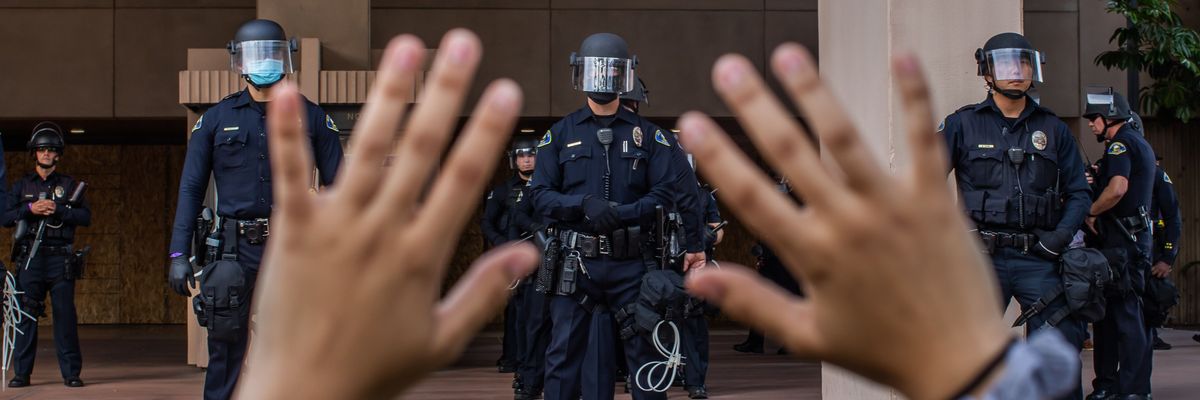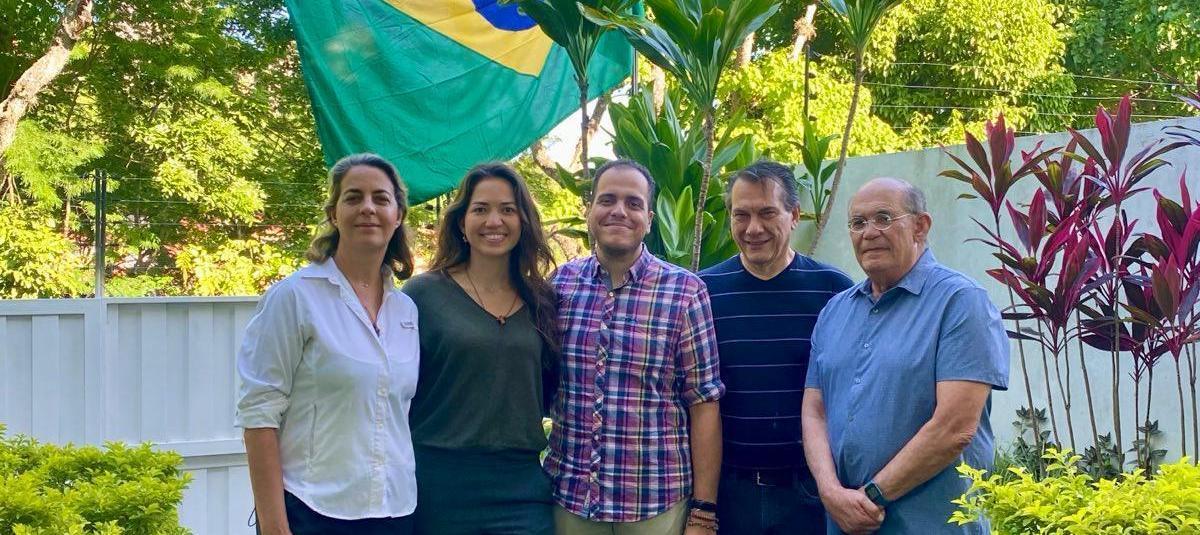“Pain and suffering are always inevitable for a large intelligence and a deep heart. The really great men must, I think, have great sadness on earth.” - ― Fyodor Dostoevsky, Crime and Punishment

Copaganda contributes to a cycle in which the root causes of our safety problems never get solved even though people in power constantly claim to be trying.
Copaganda is a specific type of propaganda in which the punishment bureaucracy and the powerful interests behind it influence how we think about crime and safety. I use the term “punishment bureaucracy” instead of “criminal justice system” in this book because it is a more accurate and less deceptive way to describe the constellation of public and private institutions that develop, enforce, and profit from criminal law. The government determines what things are considered a “crime” subject to punishment versus what things are permitted or tolerated even if they hurt people. Then, the government determines what kinds of punishments are appropriate for the conduct it prohibits. Across history and different societies, the definition of crime and how it should be punished has varied depending on who has power and what serves their interests, not an objective evaluation of what causes harm.
The powerful define crime to suit their interests, making some things legal and others punishable. They also decide how what is criminalized gets punished. Should the government execute or cage or whip people who break a law? Should the government mandate a public apology, permit survivors to initiate restorative processes, seize assets, require volunteer work, revoke a business or driver’s license, confine someone to their home, banish them? Should society show them love and give them help? Should society instead invest more in preventing certain harms from happening in the first place?
Having defined crime and punishment, the government also determines which crimes to enforce against which people. “Law enforcement” rarely responds to most violations of the law. It only enforces some criminal laws against some people some of the time.
The obsessive focus by news outlets on the punishment bureaucracy as a solution to interpersonal harm draws away resources from investment in the things that work better, along with a sense of urgency for those priorities.
These decisions, too, follow patterns of power, not safety. That is why U.S. police chose for many years to arrest more people for marijuana possession than for all “violent crime” combined. That is why police prioritize budgets for SWAT teams to search for drugs in poor communities over testing rape kits. That is why the Los Angeles Sheriff’s Office responded to proposed county budget cuts by threatening to cut the divisions that handle white-collar crimes and sexual abuse. That is why about 90 percent of people prosecuted for crimes are very poor. That is why no senior figures were prosecuted for the 2008 financial crisis or the U.S. torture program after 9/11. That is why police tolerate widespread drug use in dorms at Ivy League universities. That is why most of the undercover police operations in hundreds of U.S. cities target disproportionately Black, Hispanic, and immigrant people instead of other police officers, prosecutors, real estate developers, fraternities with histories of drug distribution and rape, or corporate board rooms with histories of tax evasion, fraud, and insider trading. That is why a playground fight at a low-income school results in a child being taken away from their parents and jailed with a criminal record, while the same fight at a prep school may result in a call to parents for an early pickup that afternoon.
In an unequal society where a few have more money and power than the many, the punishment bureaucracy is a tool for preserving inequalities. It maintains the social order by using government violence to manage the unrest that comes from unfairness, desperation, and alienation, and it crushes organized opposition against the political system. These functions explain why the punishment bureaucracy expands during times of growing inequality and social agitation. Throughout history, those who are comfortable with how society looks tend to preserve and expand the punishment bureaucracy, even though—and largely because—it operates as an anti-democratic force. Those who have wanted to change certain aspects of our society—such as movements for workers, racial justice, women’s suffrage, economic equality, peace, ecological sustainability, immigrant rights, LGBTQ+ rights, and so on—have tended throughout history to combat the size, power, and discretion of the punishment bureaucracy. Why? Because it is almost always wielded against them.
So, how does copaganda work? It has three main roles.
Job #1: Narrowing Our Understanding of Threat
The first job of copaganda is to narrow our conception of threat. Rather than the bigger threats to our safety caused by people with power, we narrow our conception to crimes committed by the poorest, most vulnerable people in our society. For example, wage theft by employers dwarfs all other property crime combined—such as burglaries, retail theft, and robberies—costing an estimated $50 billion every year. Tax evasion steals about $1 trillion each year. That’s over sixty times the wealth lost in all police-reported property crime. There are hundreds of thousands of known Clean Water Act violations each year, causing cancer, kidney failure, rotting teeth, damage to the nervous system, and death. Over 100,000 people in the United States die every year from air pollution, about five times the number of homicides. At the same time, most sexual assaults, domestic violence crimes, and sex offenses against children go unreported, unrecorded, and ignored by the legal system. Punishment bureaucrats feed reporters stories that measure “safety” as any short-term increase or decrease in, say, official homicide or robbery rates, rather than by how many people died from lack of health care, how many children suffered lead poisoning, how many families were rendered homeless by eviction or foreclosure, how many people couldn’t pay utility bills because of various white-collar crimes, how many thousands of illegal assaults police and jail guards committed, and so on. Sometimes the rates of various crimes go up and down, and we should all be concerned about any form of violence against any human being. But the first job of copaganda is getting us focused almost exclu- sively on a narrow range of the threats we face, mostly the officially-recorded crimes of poor people, rather than the large-scale devastation wrought by people with power and money.
Job #2: Manufacturing Fear
The second job of copaganda is to manufacture crises and panics about this narrow category of threats. After the 2020 George Floyd uprisings, for example, the news bombarded the public with a series of “crime waves” concerning various forms of crime committed by the poor even though government data showed that, despite some categories of police-reported crime rising and others falling at the beginning of the pandemic, overall property and violent crime continued to be at near-historic fifty-year lows the entire time. As a result of continual news-generated panics, nearly every year of this century, public opinion polls showed people believing that police-reported crime was rising, even when it was generally falling.
Copaganda leaves the public in a vague state of fear. It manufactures suspicion against poor people, immigrants, and racial minorities rather than, say, bankers, pharmaceutical executives, fraternity brothers, landlords, employers, and polluters. Copaganda also engenders fear of strangers while obscuring the oppressive forces that lead to interpersonal violence between acquaintances, friends, and family members. (Police themselves commit one-third of all stranger-homicides in the U.S., but these figures are generally excluded from reported crime rates.) This matters because when people are in a perpetual state of fear for their physical safety, they are more likely to support the punishment bureaucracy and authoritarian reactions against those they fear.
Job #3: Promoting Punishment as the Solution
The third job of copaganda is to convince the public to spend more money on the punishment bureaucracy by framing police, prosecutors, probation, parole, and prisons as effective solutions to interpersonal harm. Copaganda links safety to things the punishment bureaucracy does, while downplaying the connection between safety and the material, structural conditions of people’s lives. So, for example, a rise in homeless people sleeping in the street might be framed as an economic problem requiring more affordable housing, but copaganda frames it as “disorder” solvable with more arrests for trespassing. Instead of linking sexual assault to toxic masculinity or a lack of resources and vibrant social connections to escape high-risk situations, copaganda links it to an under-resourced punishment system. Like a media-induced Stockholm syndrome, copaganda sells us the illusion that the violent abuser is somehow the liberator, the protector, our best and only option.
If police, prosecutions, and prisons made us safe, we would be living in the safest society in world history. But, as I discuss later, greater investment in the punishment bureaucracy actually increases a number of social harms, including physical violence, sexual harm, disease, trauma, drug abuse, mental illness, isolation, and even, in the long term, police-recorded crime. Instead, overwhelming evidence supports addressing the controllable things that determine the levels of interpersonal harm in our society, including: poverty; lack of affordable housing; inadequate healthcare and mental wellness resources; nutrition; access to recreation and exercise; pollution; human and social connection; design of cities, buildings, and physical environments; and early-childhood education. Addressing root causes like these would lower police-reported crime and also prevent the other harms that flow from inequality that never make it into the legal system for punishment, including millions of avoidable deaths and unnecessary suffering that exceed the narrow category of harm that police record as “crime.”
The obsessive focus by news outlets on the punishment bureaucracy as a solution to interpersonal harm draws away resources from investment in the things that work better, along with a sense of urgency for those priorities. It also promotes the surveillance and repression of social movements that are trying to solve those root structural problems by fighting for a more equal and sustainable society. Copaganda thus contributes to a cycle in which the root causes of our safety problems never get solved even though people in power constantly claim to be trying.
As you read the examples collected in this book with the above three themes in mind, ask yourself: what kind of public is
created by consuming such news? If we see one of these articles once,
we may not notice anything odd, or we may shake our heads at how silly,
uninformed, and nefarious it is. But if we see thousands of them over
the course of years, and we hardly see anything else, we become
different people. It is the ubiquity of copaganda that requires us to
set up daily practices of individual and collective vigilance.
Copyright © 2025 by Alec Karakatsanis. This excerpt originally appeared in Copaganda: How Police and the Media Manipulate Our News, published by The New Press. Reprinted here with permission and please note that it is not available for re-posting elsewhere.



